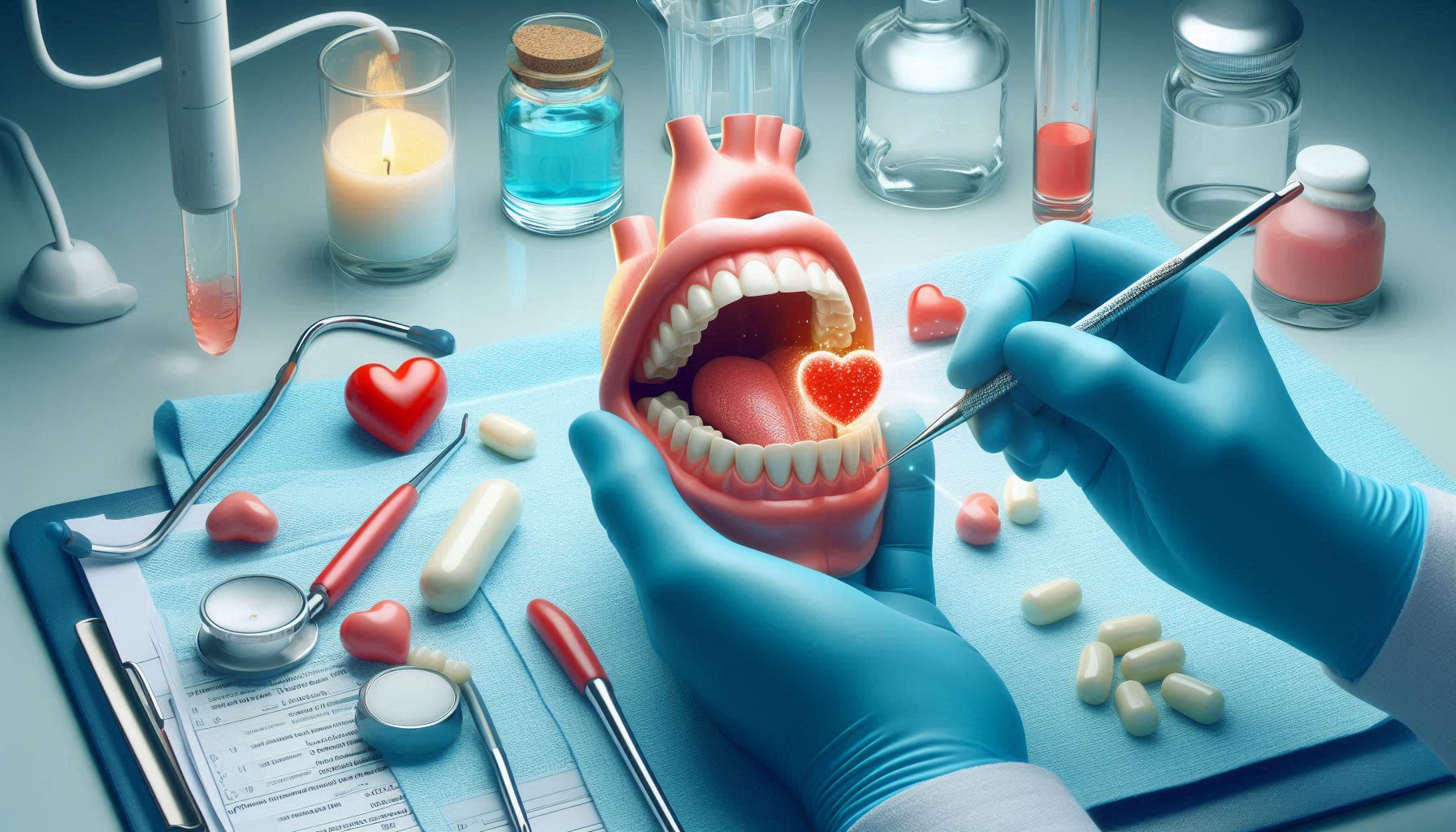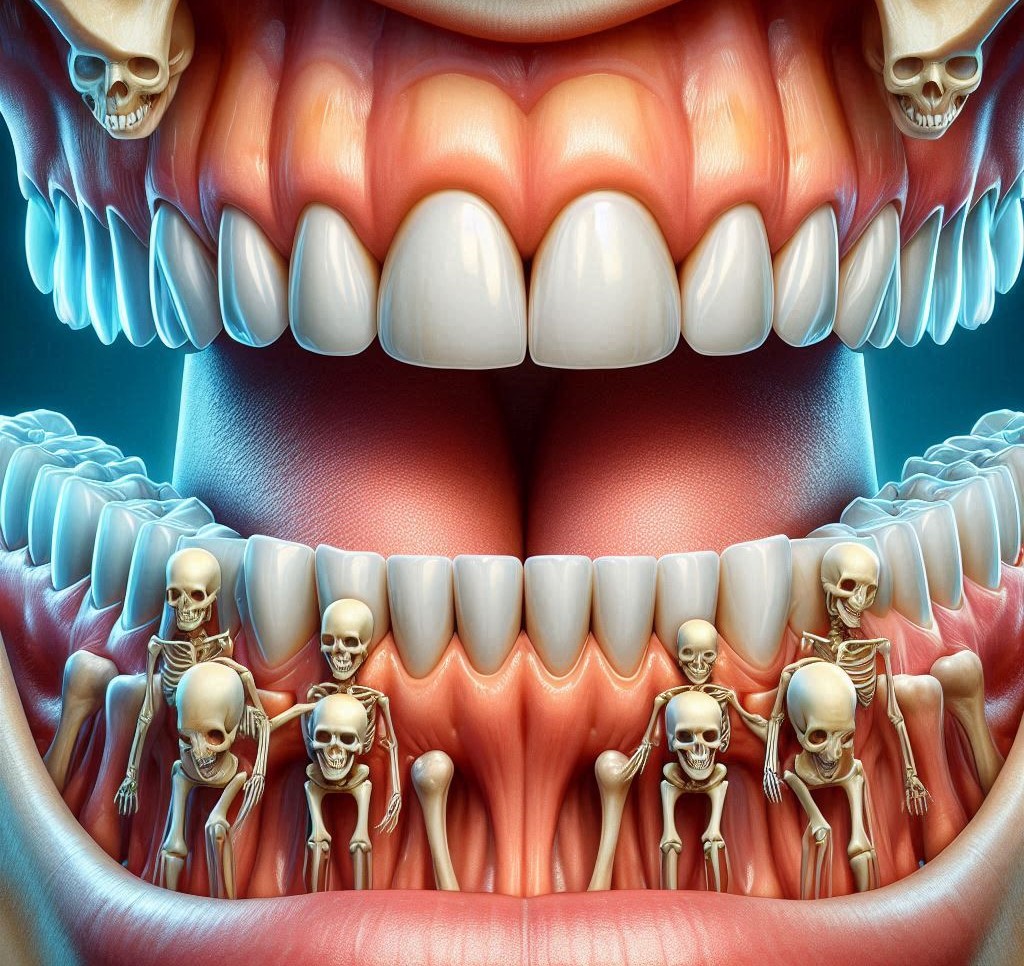Smiling is a simple, yet powerful, tool. It is an action that takes only a few seconds but has the ability to shift the trajectory of your day, enhance your relationships, and transform how you feel about yourself. It’s often regarded as a gesture of friendliness, but its effects reach far deeper than just making you seem approachable or polite. A smile can elevate your mood, build confidence, foster deeper connections with others, and even improve your overall mental and physical health.
In this guide, we will dive deeply into the science behind why smiling is so effective, how it influences our emotions and relationships, and how we can harness the power of this small gesture to create lasting, positive changes in our lives. Whether you struggle with social anxiety, self-doubt, or low self-esteem, or whether you’re simply looking to elevate your everyday experiences, understanding the true impact of a smile can be transformative.
1. The Science Behind a Smile: The Neurological and Psychological Mechanisms
A smile is not just a facial expression; it’s a neurological and physiological response that involves multiple areas of the brain, muscles, and even hormones. While smiling may seem like a simple act, there’s a lot going on behind the scenes to make it possible and powerful.
The Role of Neurotransmitters: The Feel-Good Chemicals
When you smile, your brain releases certain chemicals known as neurotransmitters—dopamine, serotonin, and endorphins—that create a profound sense of happiness and relaxation. These chemicals are responsible for regulating mood, reducing pain perception, and promoting feelings of pleasure. They’re often called the “feel-good” hormones because of their ability to reduce stress, ease anxiety, and lift one’s mood.
- Dopamine: Known as the “reward” neurotransmitter, dopamine is released when you smile, which is why you feel a sense of satisfaction or happiness. It is the same neurotransmitter that is involved when we engage in pleasurable activities, such as eating or accomplishing something important.
- Serotonin: This neurotransmitter is often linked to feelings of well-being and happiness. It plays a crucial role in stabilizing mood and promoting emotional balance. Smiling helps stimulate the production of serotonin, which can act as a natural antidepressant and reduce feelings of anxiety or stress.
- Endorphins: These are the body’s natural painkillers and mood enhancers. When endorphins are released during smiling, they help relax the body, reduce tension, and improve overall mental health. Endorphins have been found to promote feelings of euphoria, which is why laughing or smiling can often make us feel lighter and more content.
Facial Feedback Hypothesis: How Smiling Can Change Our Emotions
The “facial feedback hypothesis” suggests that our facial expressions can influence our emotions. In other words, the act of smiling can actually make us feel happier, regardless of whether we’re genuinely in a joyful state. This idea, first proposed by psychologist Charles Darwin and later supported by numerous studies, asserts that when we make facial expressions that mimic happiness, such as smiling, the brain interprets this as a signal that we are happy, thus boosting positive feelings.
Even if a smile is forced or happens during a stressful moment, research shows that the brain responds by improving mood. The brain’s ability to “trick” itself into positive emotions highlights just how powerful a simple smile can be in shifting our emotional state.
The Mirror Neuron System: How Smiling Affects Others
The impact of your smile doesn’t stop with how it makes you feel; it also influences how others feel. When you smile, you activate your “mirror neurons,” which are responsible for empathetic responses in other people. Essentially, these neurons cause others to mirror your facial expressions, including smiling.
This creates a contagious effect, where your smile encourages the people around you to smile back. In this way, your smile doesn’t just improve your own mood—it spreads positivity, elevates the mood of others, and fosters a warm, welcoming atmosphere.
Smiling and Stress Reduction: A Natural Anxiety Reliever
Smiling has been shown to lower cortisol levels, which are the body’s primary stress hormones. Cortisol is produced in response to stress and anxiety, and chronically high levels can lead to various negative health outcomes, including higher blood pressure, poor immune function, and a weakened sense of mental well-being.
When you smile, your body’s stress response is mitigated, leading to a more relaxed state. This reduction in cortisol can be especially helpful during tense moments, such as when you’re facing public speaking, job interviews, or challenging conversations. Smiling helps to regulate your emotions and create a calmer, more composed version of yourself, making you appear more confident and at ease.
2. The Power of Non-Verbal Communication: How Smiling Enhances Social Interactions
Communication is not just about words; it’s primarily about how we express ourselves. According to various studies, over 55% of communication is non-verbal, which includes facial expressions, body language, and tone of voice. A smile is one of the most important non-verbal cues that convey feelings of warmth, openness, and receptivity. It can influence how others perceive us and how we connect with them.
Breaking the Ice and Making First Impressions
In social interactions, first impressions are everything. The initial moment when you meet someone can determine the entire trajectory of your relationship, whether it’s personal or professional. Smiling plays a crucial role in forming these first impressions, as it helps break the ice and establish rapport.
When you smile at someone, it signals to them that you are approachable, friendly, and open to conversation. This simple, yet powerful, gesture instantly makes people feel more comfortable in your presence. Even if you’re meeting someone for the first time, your smile sets the tone for positive interaction, making it easier for them to engage with you.
Creating Approachability in Social Situations
We’ve all encountered people who seem closed off or unapproachable. Maybe they have a neutral or even stern expression on their face, which can make others hesitant to initiate conversation. On the other hand, when someone smiles, they become much more approachable.
A smile acts as an invitation for others to engage with you, whether it’s to start a casual conversation, ask for help, or collaborate on a project. It’s an unspoken signal that you are open to social connection, which naturally draws people toward you. This is particularly valuable in social settings, where initiating conversations can be intimidating or uncomfortable.
Smiling and the ‘Likeability’ Factor
One of the most important aspects of social dynamics is “likeability.” People tend to gravitate toward individuals who are friendly, engaging, and pleasant to be around. Smiling plays a significant role in making you more likeable. It shows that you are approachable, happy, and confident. A genuine smile can make others feel valued and understood, which helps build trust and rapport.
When you smile at someone, your face exudes positivity, and people are naturally more likely to respond to that energy. This creates a feedback loop where your smile makes you more likeable, and in turn, others are more likely to engage positively with you, making social interactions feel effortless and enjoyable.
Smiling as a Confidence Booster: The Internal and External Effects
Confidence is something many people struggle with, especially in social situations. It’s natural to feel nervous when meeting new people, attending a party, or giving a presentation. However, one of the simplest and most effective ways to boost your confidence is by smiling. Smiling not only influences how others perceive you but also has a profound effect on how you perceive yourself.
Smiling and Self-Assurance
When you smile, your brain receives positive feedback from your facial expression. This feedback helps reinforce your sense of self-assurance. If you smile while walking into a room, even if you feel nervous or insecure, your body and mind begin to adapt to the confident posture that smiling embodies. Over time, this act of smiling can start to feel more natural, gradually building your overall confidence in social interactions.
Research has shown that people who smile are perceived as more confident, even if they don’t outwardly display other forms of self-assurance, like good posture or strong eye contact. The act of smiling alone communicates to others—and to yourself—that you are in control, comfortable, and competent.
Creating a Calm and Collected Presence
Smiling can also help you maintain a calm and collected demeanor in stressful or high-pressure situations. Whether you’re speaking in public, making a difficult decision, or facing a challenging conversation, smiling can make you appear more in control of your emotions. This outward display of calmness can actually help you regulate your internal state as well, reducing anxiety and helping you stay focused.
When you smile during moments of stress or discomfort, you signal to your brain that everything is okay, which can help bring your emotions back into balance. The result is a confident, composed version of yourself that is better equipped to handle challenges.
Smiling as a Confidence Booster in Social Situations
Social situations are often full of potential anxieties. Whether you’re going to a party, a networking event, or even a casual gathering, the pressure to make a good impression can be overwhelming. In these moments, a smile acts as a powerful social tool that can calm nerves, establish positive rapport, and help you feel more confident.
Smiling Reduces Social Anxiety
Social anxiety is a common issue that many people face when interacting with others. It’s often characterized by feelings of nervousness, fear of judgment, and a strong desire to avoid being in the spotlight. However, smiling can help reduce some of the negative effects of social anxiety.
When you smile, you are not only signaling to others that you are friendly and approachable, but you’re also signaling to yourself that you are comfortable and confident. Smiling can act as a simple coping mechanism that helps reduce the physiological symptoms of anxiety, such as a racing heart or sweaty palms. It’s almost as if you are reassuring yourself that everything is going to be okay.
Smiling Makes You Appear More Relaxed
In social situations, it’s easy to get tense, especially if you’re feeling self-conscious. However, smiling helps you maintain a relaxed and composed demeanor. When you smile, your body naturally relaxes, which in turn can reduce the tension you might be feeling. A relaxed body language makes you seem more at ease and confident, making others feel more comfortable around you.
People are naturally drawn to those who seem relaxed and confident. By smiling, you create an impression of calmness, which often makes others feel more comfortable in your presence. This can lead to smoother, more natural conversations, allowing you to feel more confident during interactions.
Smiling as a Bridge in Difficult Social Interactions
In difficult social situations—such as meeting someone new, speaking in public, or dealing with a challenging conversation—a smile can serve as a bridge that helps you navigate the awkwardness and discomfort. Even if you’re unsure or nervous, a smile makes it easier to maintain a positive atmosphere and signals that you’re open and friendly.
This is particularly valuable in business and networking settings, where you might have to interact with strangers or unfamiliar individuals. A smile can create immediate rapport, making it easier to establish a connection, even in high-stakes environments. The simple act of smiling can create a moment of mutual understanding and reduce the distance between you and the other person.
The Link Between Smiling and Emotional Health
Smiling doesn’t just affect how others perceive us; it has a profound impact on our emotional health as well. It can serve as an emotional regulator, helping to manage stress and enhance feelings of happiness and contentment.
Smiling as a Stress Reliever
One of the greatest benefits of smiling is its ability to reduce stress. When you smile, your body releases endorphins and serotonin—natural chemicals that help combat stress. These chemicals counteract the physiological effects of stress, such as elevated blood pressure, increased heart rate, and muscle tension.
In stressful moments, taking a few seconds to smile can help signal to your brain that you are not in immediate danger and that everything is under control. Smiling is like hitting the emotional reset button. The next time you find yourself in a stressful situation, try smiling; you may notice a reduction in your anxiety levels almost immediately.
Improved Mood and Positive Outlook
The simple act of smiling has been shown to improve mood, not just in the short term, but in the long run. People who smile regularly tend to have a more positive outlook on life, as they are actively engaging in a practice that promotes joy and happiness. Smiling becomes a natural response to feeling good, and the more you smile, the more likely you are to experience positive emotions.
Smiling also acts as a reminder of the good things in life. When you smile, you reinforce a sense of gratitude, satisfaction, and contentment, which is directly linked to improved mental health and well-being. A smile is often one of the easiest ways to break free from negative thought patterns and start shifting toward a more positive mindset.
Smiling as a Tool for Overcoming Depression
For individuals dealing with depression or low mood, smiling may seem like a difficult or unnatural thing to do. However, studies have shown that even forced smiles can help elevate mood over time. When you force yourself to smile, your brain begins to produce those feel-good chemicals (dopamine and serotonin), gradually helping to combat feelings of sadness or hopelessness.
Smiling is a subtle but effective way of breaking the cycle of negative thinking. Even when you don’t feel happy, the act of smiling can create a pathway to feeling better. Over time, this positive reinforcement can help shift your overall emotional state, making it easier to cope with difficult emotions and challenging circumstances.
Smiling’s Effect on Relationships
Strong relationships—whether romantic, familial, or platonic—are built on trust, understanding, and mutual respect. A smile can play a key role in fostering these qualities, enhancing connections, and strengthening bonds.
Building Trust Through a Smile
Trust is the foundation of any strong relationship, and a smile can help create a sense of trust between individuals. A smile is inherently disarming. When someone smiles at you, it sends a message that they are not a threat and that they are open to building a connection.
This is especially important in new relationships, such as when you meet someone for the first time or are trying to build rapport in a professional setting. A smile sends a clear signal that you are approachable, kind, and willing to engage in a positive way. Trust is often earned through consistent, positive interactions, and a smile helps lay the groundwork for that.
Strengthening Family and Friendships
In close-knit relationships, such as with family and friends, a smile can go a long way in fostering affection, understanding, and warmth. Smiling shows appreciation for those you care about and reinforces emotional bonds. When you smile at someone, you are telling them that you value their presence and that you are emotionally available to them.
Moreover, smiling helps smooth over moments of tension. In difficult or emotionally charged situations, smiling can act as a reminder of the positive connection you share with the other person, helping to defuse conflict and restore harmony.
The Role of Smiling in Romantic Relationships
In romantic relationships, smiling plays an even more important role. A smile is an indicator of attraction, affection, and genuine happiness. When you smile at your partner, it signals your contentment and appreciation for them. In turn, their smile helps reinforce the bond between the two of you, creating a cycle of positive reinforcement that strengthens your emotional connection.
Smiling is also important in communication. In romantic relationships, communication goes beyond words. Smiling at your partner during a conversation, even when there is tension or disagreement, helps to convey warmth and understanding. This can soften the intensity of difficult conversations and allow both individuals to feel heard and valued.
Smiling and Professional Success
In the professional world, appearances matter, and how others perceive you can greatly affect your career trajectory. Smiling can have a profound impact on your professional life, influencing how others view your competence, approachability, and overall attitude.
Making a Strong First Impression in Job Interviews
Job interviews are one of the most high-pressure situations in a person’s professional life. During these interviews, every little detail counts—from your attire to your body language. Smiling can be one of the simplest ways to make a positive first impression.
When you smile during a job interview, it shows that you are confident, approachable, and emotionally engaged with the conversation. Interviewers are more likely to remember candidates who smiled because it signals positive energy and enthusiasm for the role. A smile can also help break the ice and make you feel more comfortable during an otherwise intimidating experience.
Smiling in Leadership Roles
Leaders who smile are often perceived as more empathetic and approachable. A leader’s ability to connect with their team, show warmth, and foster a positive atmosphere can have a significant impact on workplace morale and productivity. Smiling helps humanize leaders, making them seem more relatable and open to feedback.
In high-pressure work environments, smiling can also be a signal of calm and confidence. When leaders smile, it can reassure their teams during stressful times, helping to maintain productivity and emotional well-being. Smiling leaders create an atmosphere where collaboration and trust flourish, and team members are more likely to feel motivated and valued.
Smiling as a Tool for Self-Acceptance
Self-acceptance is an essential component of personal growth. It involves recognizing your own worth, acknowledging your flaws without judgment, and embracing who you are. Smiling can play a powerful role in developing self-acceptance, especially in moments of self-doubt.
Smiling as a Practice of Self-Kindness
When you smile at yourself in the mirror, you are sending a message to your brain that you are worthy of love and kindness. This simple act of self-kindness can help you develop a more positive relationship with yourself and challenge negative self-talk.
Over time, smiling at yourself can become an affirmation of self-worth. It can help dismantle feelings of inadequacy or self-criticism, making you more comfortable in your own skin. The more you smile at yourself, the more you reinforce the idea that you deserve happiness and fulfillment.
The Global Impact of a Smile
A smile is a universal language that transcends cultural and linguistic boundaries. It’s a form of communication that speaks to the heart and builds connections between people from diverse backgrounds and experiences.
Smiling as a Bridge Across Cultures
No matter where you go in the world, a smile is understood as a sign of friendliness and kindness. It is an invitation for connection, a way to say, “I am open to engaging with you.” In cultures where verbal communication may be limited or where people are hesitant to interact due to language barriers, a smile serves as a powerful tool to bridge the gap.
When traveling or interacting with people from different cultures, a smile can ease the tension of unfamiliarity and create an immediate sense of mutual respect and understanding. It transcends words, helping people to connect on a deeper, human level.
The Ripple Effect: How Your Smile Impacts the World Around You
Smiling is contagious. The ripple effect of a smile can create a chain reaction of positivity and joy, transforming not just your mood, but also the atmosphere around you.
Creating a Positive Environment
When you smile at someone, they are likely to smile back. This simple exchange of positive energy can spread throughout your environment, creating a more harmonious and uplifting atmosphere. In workplaces, schools, and communities, the act of smiling can help improve group dynamics and foster a sense of unity.
Spreading Positivity Through Small Acts
The ripple effect doesn’t stop with just one interaction. A smile can inspire someone to pass on that positive energy, whether through a kind word, a gesture of help, or simply smiling back at others. This chain reaction creates a more compassionate and empathetic environment, where people feel supported and uplifted.
Conclusion
A smile is one of the simplest, yet most powerful, tools at your disposal. It has the ability to shift your mindset, transform your relationships, and impact your emotional and physical health in profound ways. Whether you’re looking to boost your confidence, connect with others, or simply improve your overall well-being, a smile is an easy and effective way to initiate change.
So, the next time you feel unsure or overwhelmed, remember that your smile has the power to turn things around. Embrace it, practice it, and let it transform your life and the lives of those around you.
SOURCES
Adler, R. B., & Proctor, R. F. (2018). Looking out, looking in: Interpersonal communication (14th ed.). Cengage Learning.
Berscheid, E. (2010). Interpersonal attraction (3rd ed.). Pearson Education.
Carnegie, D. (1936). How to win friends and influence people. Simon & Schuster.
Ekman, P. (2003). Emotions revealed: Recognizing faces and feelings to improve communication and emotional life. Henry Holt and Company.
Fredrickson, B. L. (2009). Positivity: Groundbreaking research reveals how to embrace the hidden strength of positive emotions, overcome negativity, and thrive. Crown.
Harker, L. A., & Keltner, D. (2001). Expressions of positive emotion in women’s college yearbook pictures and their relationship to personality and life outcomes across adulthood. Journal of Personality and Social Psychology, 80(1), 112-124.
Kraut, R. E., Linz, K. & Latané, B. (1986). Social influence and the smile: A study of the effects of facial expression on social interaction. Journal of Personality and Social Psychology, 50(5), 950–960.
Kuhlman, E. E. (1992). The neurochemistry of social bonds: Neuroendocrine interactions in human emotional relationships. Neuroscience and Biobehavioral Reviews, 16(1), 123-134.
Laird, J. D. (2007). Feelings: The perception of self. Oxford University Press.
McCullough, M. E., & Willoughby, B. L. B. (2009). Cognitive-emotional mechanisms underlying the effects of forgiveness on health. Personality and Social Psychology Review, 13(2), 107-123.
Neff, K. D. (2003). The development and validation of a scale to measure self-compassion. Self and Identity, 2(3), 223-250.
Ruch, W., & Ekman, P. (2001). The expressive power of the smile. Personality and Individual Differences, 31(4), 441-450.
Seligman, M. E. P. (2006). Learned optimism: How to change your mind and your life. Vintage Books.
Smith, A. J. (2007). The social psychology of smiling. Psychological Science, 16(2), 102-109.
Strack, F., Martin, L. L., & Stepper, S. (1988). Inhibiting and facilitating conditions of the human smile: A nonverbal priming experiment. Journal of Personality and Social Psychology, 54(5), 768-777.
Timmons, D. (2016). The impact of body language on interpersonal communication. Communication Research Journal, 17(3), 249-267.
HISTORY
Current Version
January 27, 2025
Written By:
SUMMIYAH MAHMOOD




